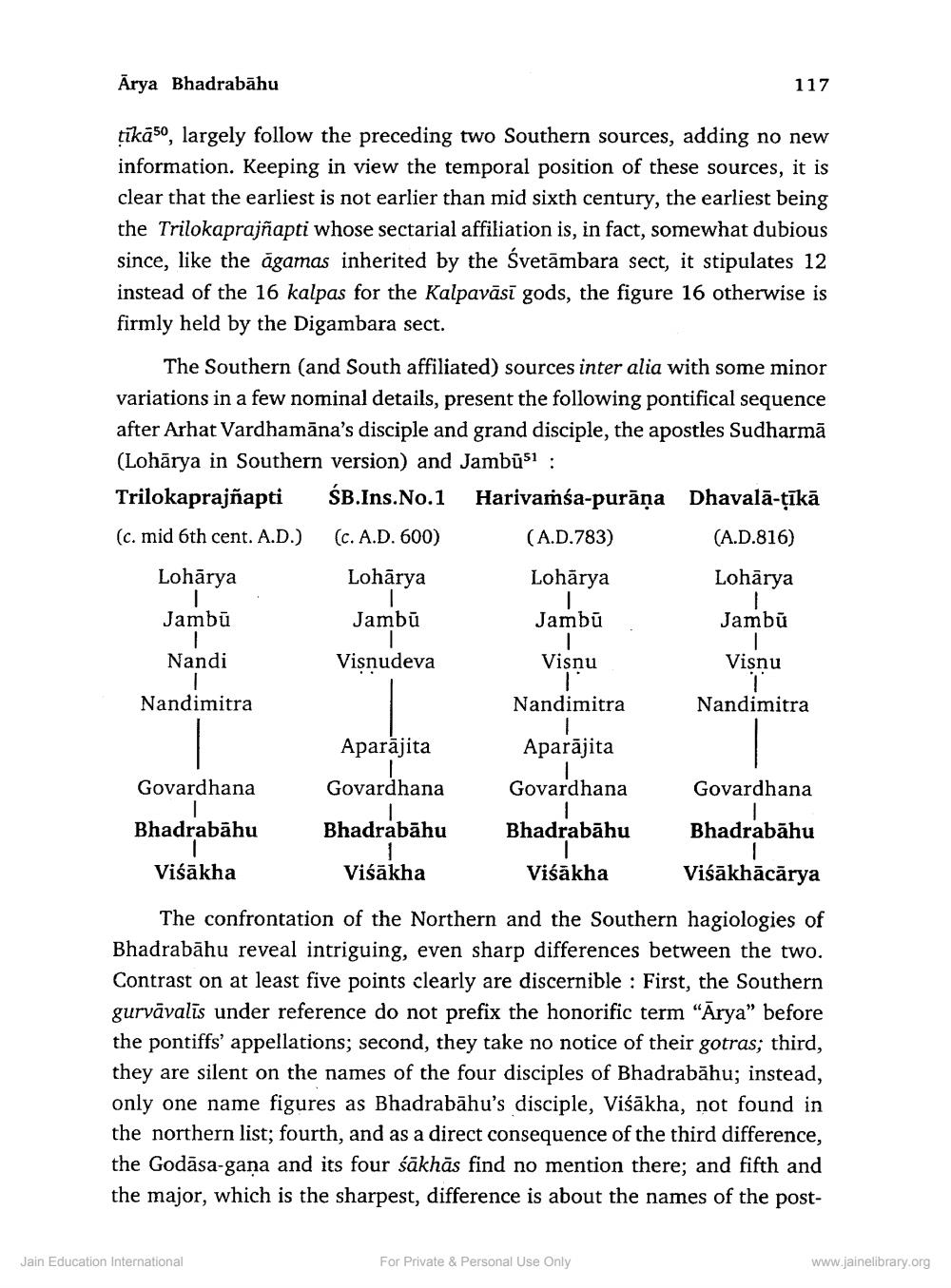________________
Arya Bhadrabāhu
117
tīkā50, largely follow the preceding two Southern sources, adding no new information. Keeping in view the temporal position of these sources, it is clear that the earliest is not earlier than mid sixth century, the earliest being the Trilokaprajñapti whose sectarial affiliation is, in fact, somewhat dubious since, like the agamas inherited by the Svetāmbara sect, it stipulates 12 instead of the 16 kalpas for the Kalpavāsī gods, the figure 16 otherwise is firmly held by the Digambara sect.
The Southern (and South affiliated) sources inter alia with some minor variations in a few nominal details, present the following pontifical sequence after Arhat Vardhamāna's disciple and grand disciple, the apostles Sudharmā (Lohārya in Southern version) and Jambū51 : Trilokaprajñapti śB.Ins.No.1 Harivamśa-purāņa Dhavalā-tīkā (c. mid 6th cent. A.D.) (c. A.D. 600)
(A.D.783)
(A.D.816) Lohārya Lohārya Lohārya
Lohārya
Jambū
Jambū
Jambū
Jambū
Nandi
Visnudeva
Visnu
Visnu
Nandimitra
Nandimitra
Nandimitra
Aparājita
Aparājita
Govardhana
Govardhana
Govardhana
Govardhana
Bhadrabāhu
Bhadrabāhu
Bhadrabāhu
Bhadrabāhu
Viśākha
Viśākha
Viśākha
Viśākhācārya
The confrontation of the Northern and the Southern hagiologies of Bhadrabāhu reveal intriguing, even sharp differences between the two. Contrast on at least five points clearly are discernible : First, the Southern gurvāvalīs under reference do not prefix the honorific term "Arya" before the pontiffs' appellations; second, they take no notice of their gotras; third, they are silent on the names of the four disciples of Bhadrabāhu; instead, only one name figures as Bhadrabāhu's disciple, Viśākha, not found in the northern list; fourth, and as a direct consequence of the third difference, the Godāsa-gana and its four sākhās find no mention there; and fifth and the major, which is the sharpest, difference is about the names of the post
Jain Education International
For Private & Personal Use Only
www.jainelibrary.org




